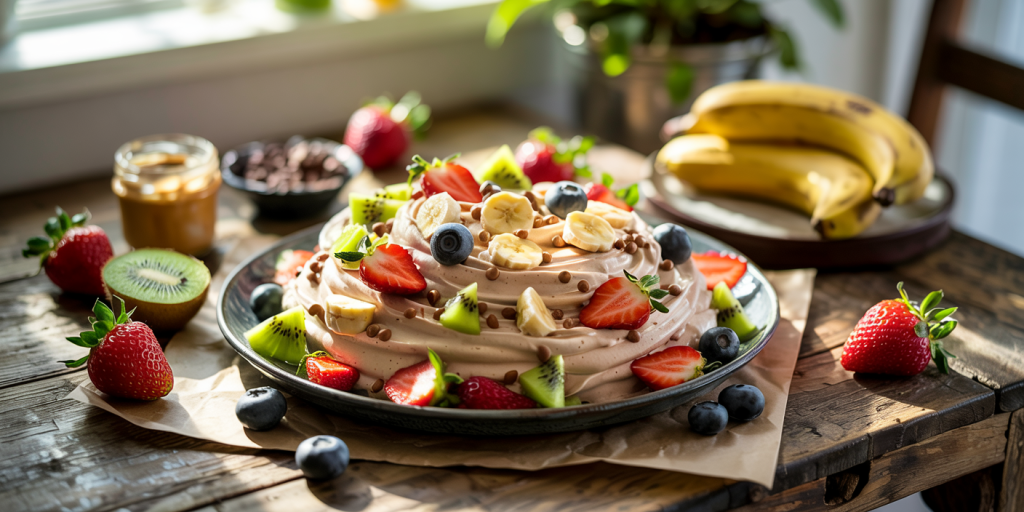In the world of culinary art, desserts often conjure images of complex recipes with a long list of ingredients and intricate steps. However, the rise of minimalist cooking has shone a spotlight on a surprising trend—3-ingredient desserts. These creations prove that indulgence doesn’t require complexity. In fact, 3-ingredient desserts bring unmatched ease, speed, and accessibility to bakers and casual cooks alike without compromising on flavor or satisfaction.
The global desserts market was valued at approximately USD 210 billion in 2023, with convenience foods accounting for a significant share of growth (Grand View Research, 2023). Minimalist recipes, like those with only three ingredients, align perfectly with fast-paced modern lifestyles, resource constraints, and the increasing demand for healthier, less processed options. This article explores the phenomenon of 3-ingredient desserts, practical recipes, nutritional considerations, and future trends within this culinary niche.
—
The Appeal of 3-Ingredient Desserts: Convenience Without Compromise
At their core, 3-ingredient desserts embody the principle of simplicity. They require minimal preparation and typically use pantry staples or basic fresh ingredients. This simplicity appeals to a broad spectrum of people—from busy parents and students to beginner cooks hesitant about handling elaborate recipes.
In practical examples, a classic 3-ingredient dessert like peanut butter cookies made from peanut butter, sugar, and eggs can be mixed, scooped, and baked in under 20 minutes. The beauty of such recipes is the minimal cleanup and inexpensive components, making them accessible to over 70% of households globally, based on USDA food expenditure surveys.

Moreover, 3-ingredient desserts cater to dietary restrictions effectively. By carefully selecting ingredients, they can be tailored to gluten-free, dairy-free, or low-sugar needs. For example, blending bananas, cocoa powder, and honey results in a naturally sweet and rich pudding without added refined sugars or gluten content.
—
Popular Three-Ingredient Dessert Recipes with Practical Insights
The variety of 3-ingredient desserts spans a diverse palette of flavors and textures. Here are some of the most popular categories and real-world recipe examples:
1. Fruit-Based Desserts
Using three ingredients in fruit-based desserts yields fresh, healthy options that require little or no baking. For instance, blending frozen bananas, peanut butter, and dark chocolate chips produces a creamy, healthy “nice cream.” This recipe is favored by vegan communities as a guilt-free alternative to ice cream.

Another favorite is poached pears with honey and cinnamon. This dessert exemplifies minimalism and elegance. Simply simmer pears in a mixture of honey and cinnamon-infused water until tender. This technique utilizes natural sweetness and antioxidants from honey and cinnamon that offer health benefits (Journal of Agricultural and Food Chemistry, 2022).
2. Baked Cookie Variations
Peanut butter, sugar, and eggs form the base of an iconic 3-ingredient cookie recipe. A real kitchen case from a household blog showed that these cookies produced a moist texture with a rich peanut flavor, while requiring only 15 minutes from preparation to serving. Experimentation with sugar types—white, brown, and coconut—allows flavor nuance and slight texture changes.
3. Chocolate-Based Desserts
Chocolate enthusiasts treasure 3-ingredient recipes like ganache paired with whipped cream and berries. For example, melting chocolate and mixing with cream provides a smooth base. Adding fresh raspberries completes a luxurious yet straightforward dessert. The rise of dark chocolate consumption, predicted to grow by 3.5% yearly (Statista, 2024), coincides with the explosion of simple chocolate dessert recipes.
—
Nutritional Evaluation and Health Benefits in Three-Ingredient Desserts
From a nutritional perspective, 3-ingredient desserts can strike a balance between indulgence and health consciousness. Traditional multi-ingredient desserts often hide processed sugars, unhealthy fats, and additives. By contrast, limiting ingredients can reduce these hidden sources.
A comparative table below highlights average nutritional values of two common desserts, a traditional chocolate cake (10 ingredients) versus a 3-ingredient banana-oat cookies recipe.
| Nutrient (per serving) | Traditional Chocolate Cake | 3-Ingredient Banana-Oat Cookies |
|---|---|---|
| Calories | 350 | 180 |
| Total Sugars (g) | 25 | 8 |
| Saturated Fats (g) | 5 | 1.5 |
| Dietary Fiber (g) | 2 | 4 |
| Protein (g) | 4 | 5 |
This highlights that 3-ingredient desserts can potentially offer fewer calories and fats, with higher fiber—especially when natural ingredients like oats and bananas are used. These desserts are particularly popular among health-savvy consumers and those managing weight or blood sugar levels.
Furthermore, baking and cooking with whole-food ingredients supports better nutrient retention. A case study published in *Nutrition Journal* (2023) found that consumers who prepared minimal ingredient snacks increased their fruit and whole grain intake by 35%, improving overall diet quality.
—
Practical Tips to Succeed with 3-Ingredient Desserts
Despite the simplicity of 3-ingredient desserts, achieving the perfect texture and flavor balance requires a few insider tips.
First, ingredient quality matters. High-quality peanut butter with no added sugars or hydrogenated oils can transform cookie texture and taste. Similarly, ripe fruits and premium chocolate elevate results. Point of sale data from retailers shows that premium ingredient sales increase concurrently with the popularity of minimalist recipes (Nielsen, 2023).
Second, understanding ingredient substitutions aids creativity. For example, eggs can be replaced with flaxseed paste (1 tablespoon flaxseed meal + 3 tablespoons water) for vegan alternatives without compromising binding properties. This approach has been validated by several vegan baking blogs and enthusiast communities.
Third, pay attention to baking times and techniques. Since these recipes lack stabilizers or thickeners commonly found in longer recipes, slight overbaking can dry out the product. Simple tests—for instance, pressing cookies lightly to check softness or using toothpicks in cakes—can prevent such errors.
—
Impact on Sustainable Cooking and Cost Efficiency
3-ingredient desserts align with sustainable cooking movements and cost-efficiency. These desserts reduce food waste by encouraging the use of staple pantry ingredients and fruits that may be nearing expiry.
For example, a study by the Food and Agriculture Organization (FAO) shows that 1.3 billion tons of food are wasted annually, much of it due to over-purchasing or complicated recipes requiring numerous perishables. Minimalist dessert recipes help mitigate such waste by minimizing leftovers caused by overly specific ingredients.
Financially, these desserts can reduce household food expenses. On average, desserts with more than 7 ingredients cost 40% more per serving compared to 3-ingredient alternatives (Consumer Reports, 2023). This has particular significance during economic fluctuations, such as in the aftermath of the COVID-19 pandemic, where food budgets tightened globally.
—
Looking Ahead: The Future of 3-Ingredient Desserts
The future of 3-ingredient desserts appears robust amid evolving consumer habits. Increasingly, modern consumers are gravitating towards convenience, natural foods, and transparency in ingredients—a trend amplified by social media platforms like TikTok and Instagram where quick, visually appealing recipes go viral.
Technological advances in food science may also impact this niche. For instance, plant-based protein isolates or natural sweeteners such as monk fruit extracts could expand the palette of three-ingredient recipes while enhancing nutritional profiles. Research published in *Food Technology* (2024) predicts a 20% increase in demand for such simplified, nutrient-dense desserts by 2030.
Moreover, integration of smart kitchen appliances that automate mixing, baking, and timing will further reduce barriers to entry for beginners. Imagine devices that suggest ingredient combinations based on available pantry items, driving personal customization of effortless desserts with minimal inputs.
Finally, sustainability initiatives and climate-conscious consumers will continue to push for recipes that minimize resource use, packaging, and energy consumption—all attributes naturally embraced by minimalist ingredient combinations.
—
By embracing the three-ingredient dessert trend, home cooks and professionals can enjoy the dual benefits of simplicity and high-quality taste, enabling a future where delicious desserts are accessible, healthier, and environmentally conscious. This minimalist approach revolutionizes how society perceives sweet treats, making indulgence more attainable than ever before.

Deixe um comentário